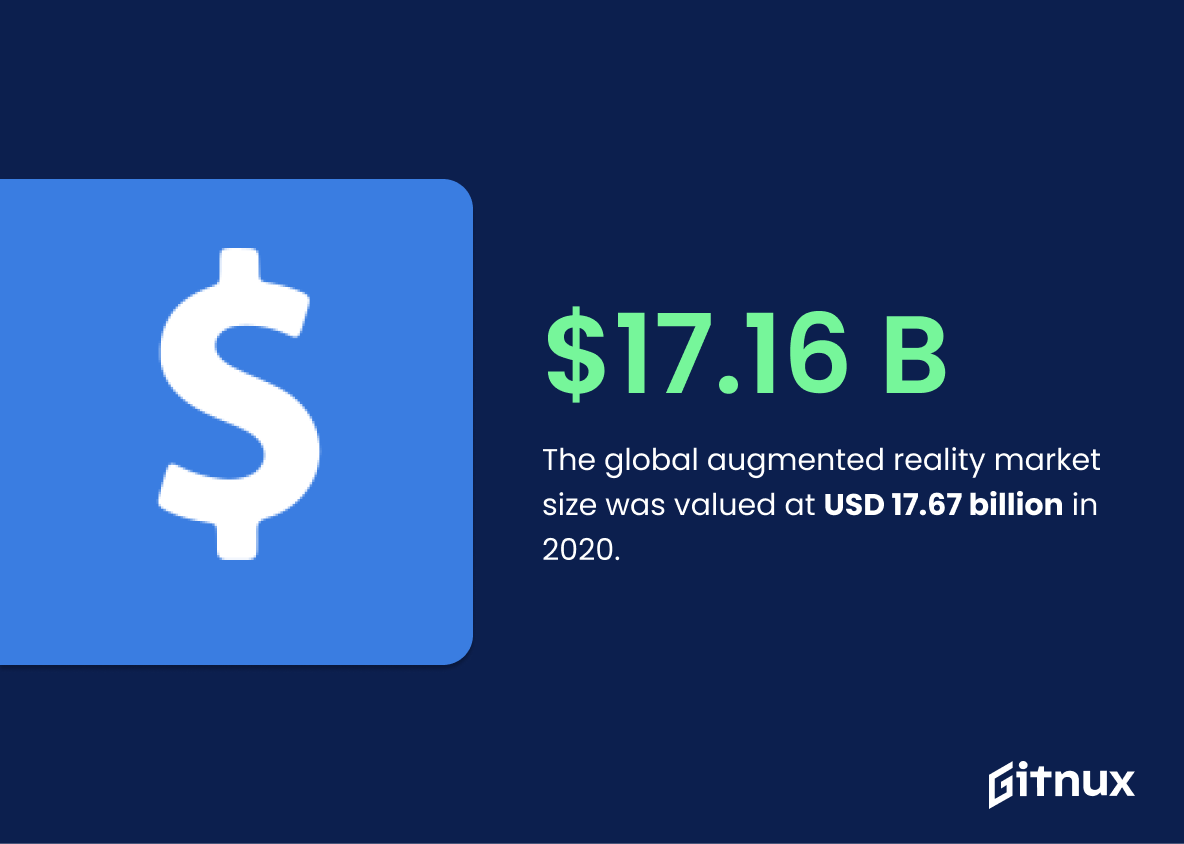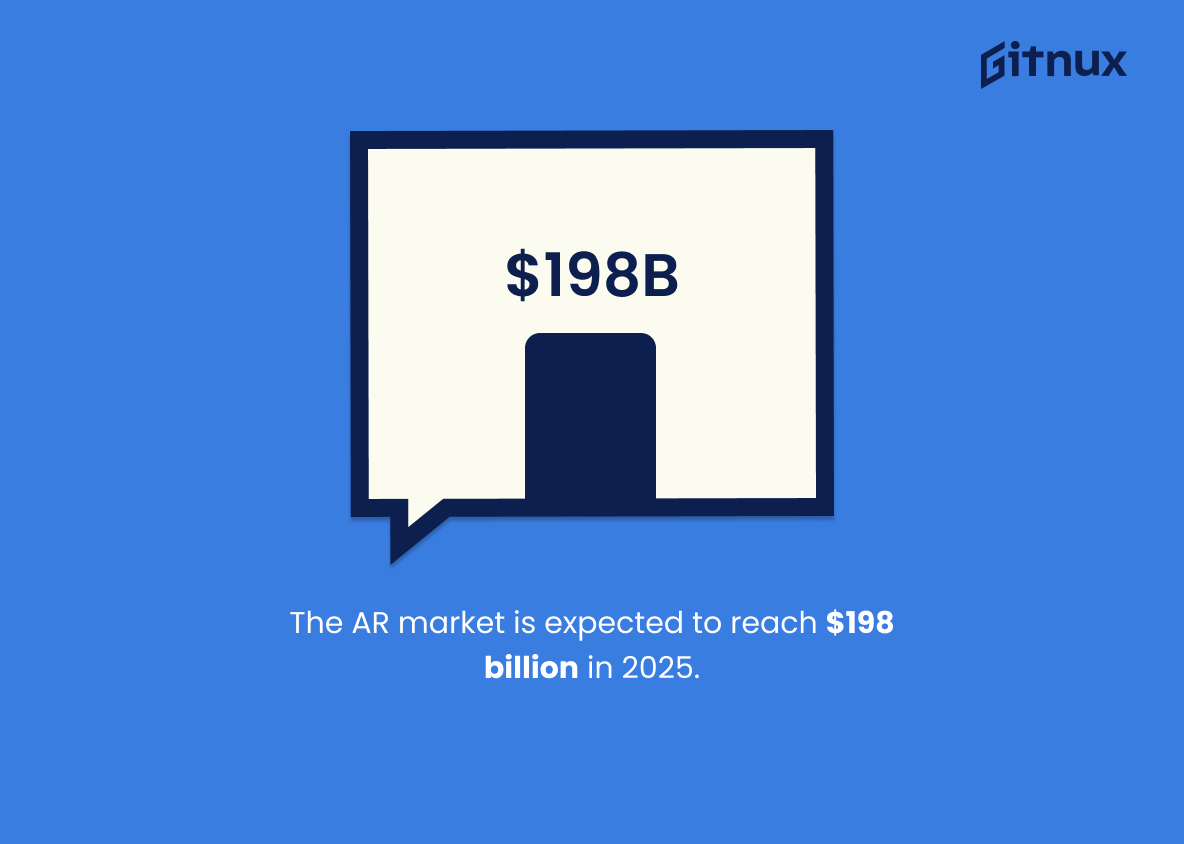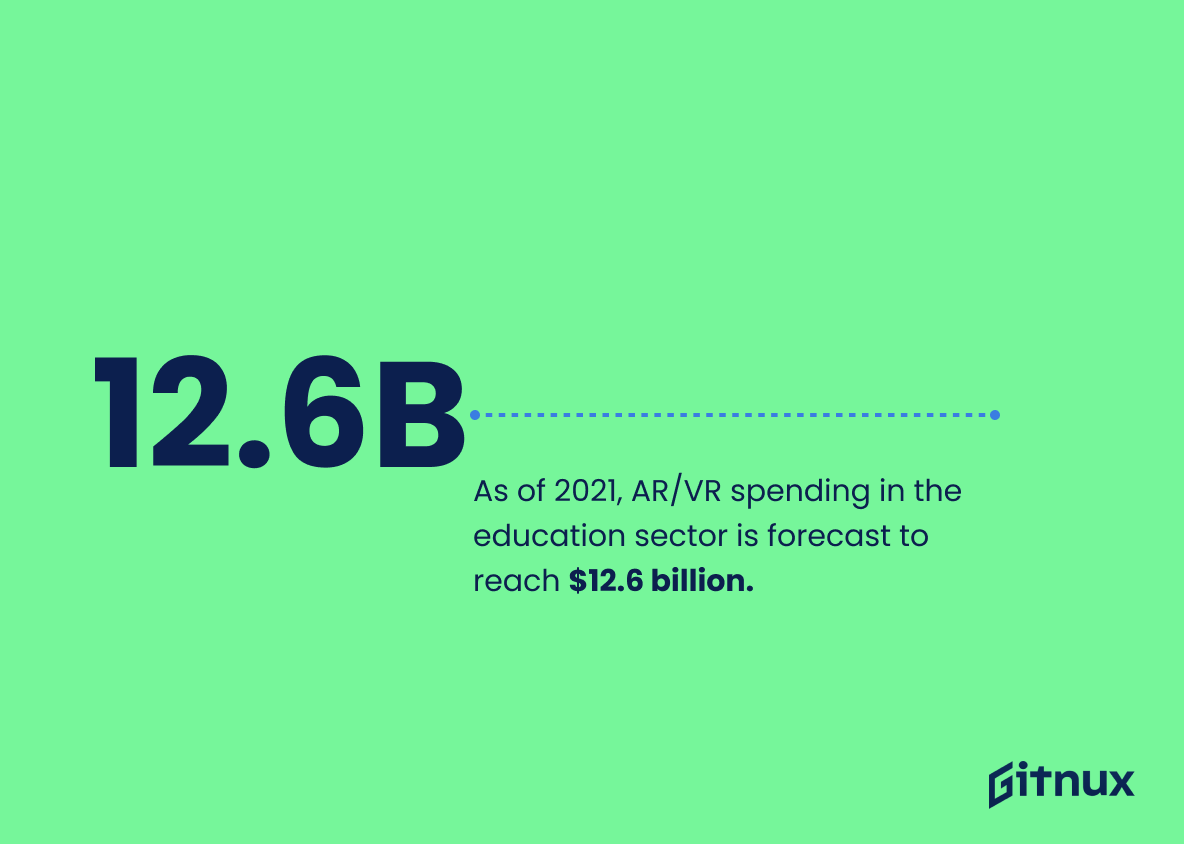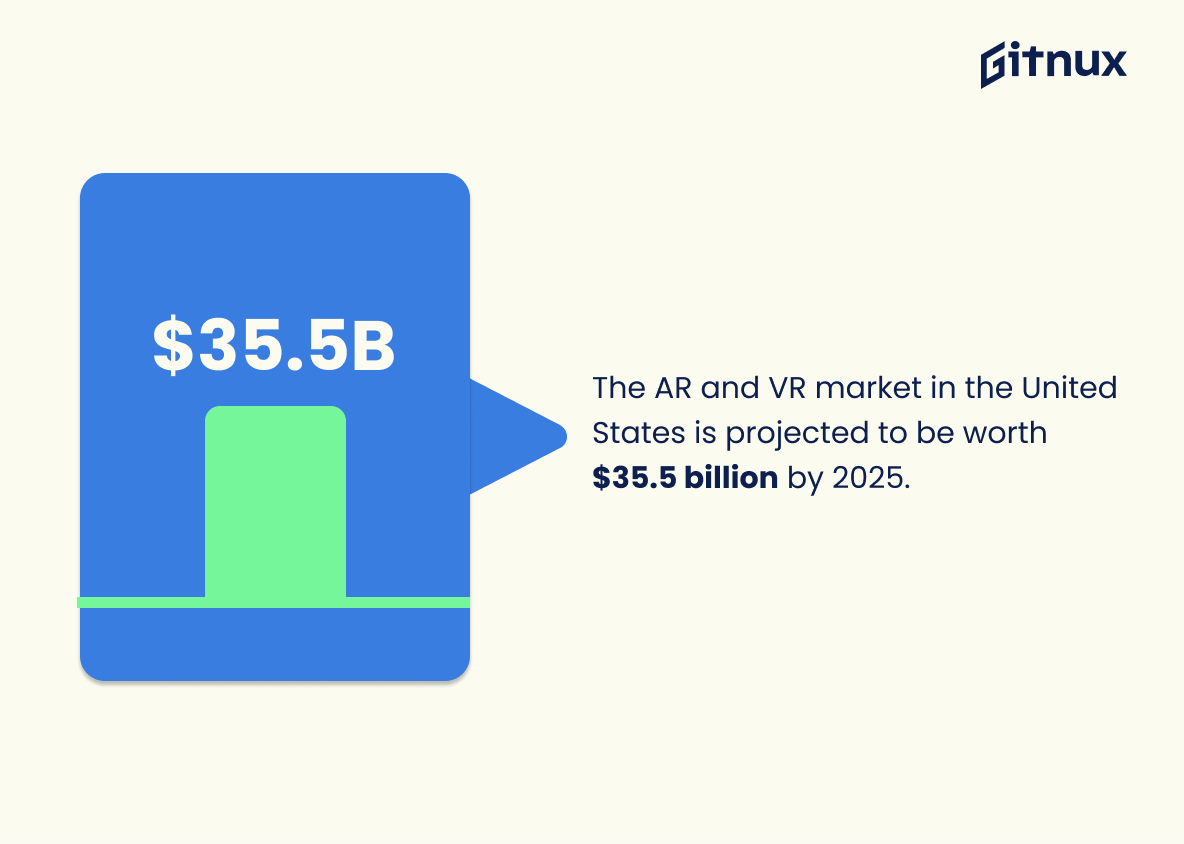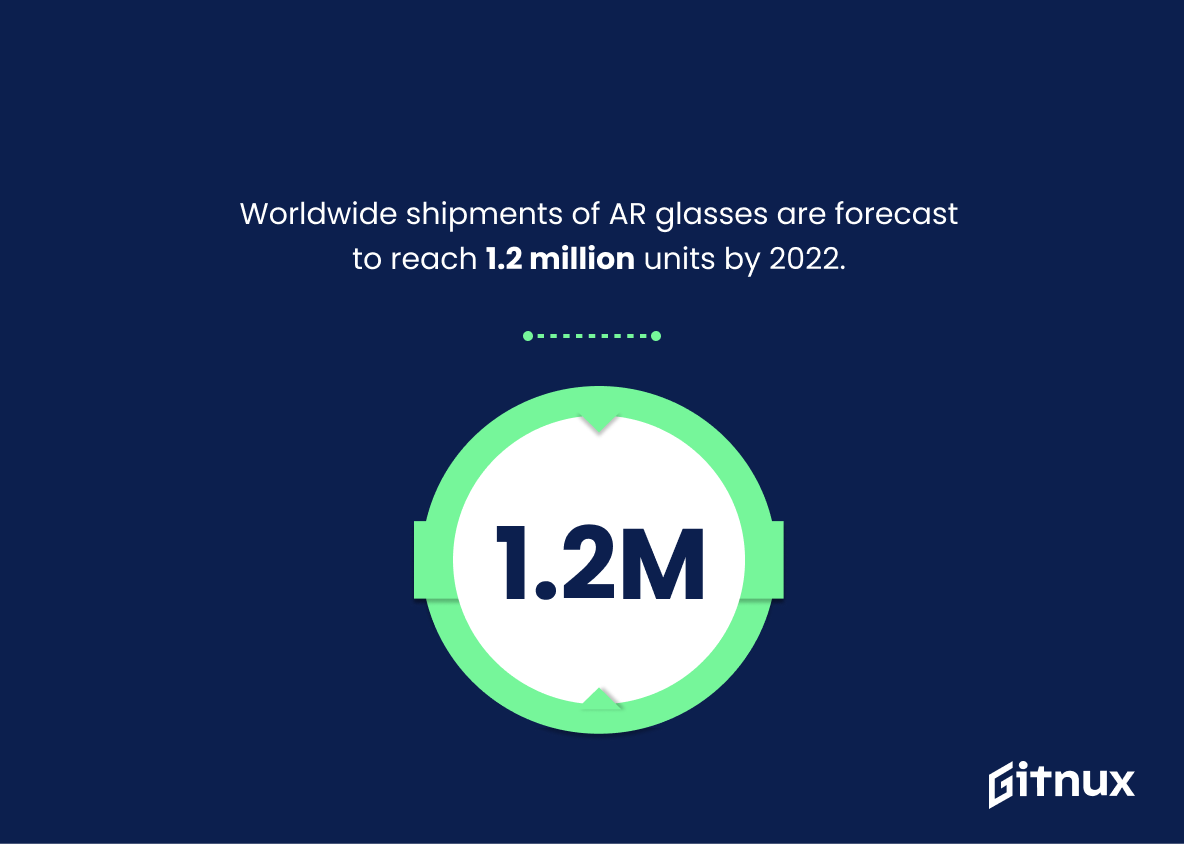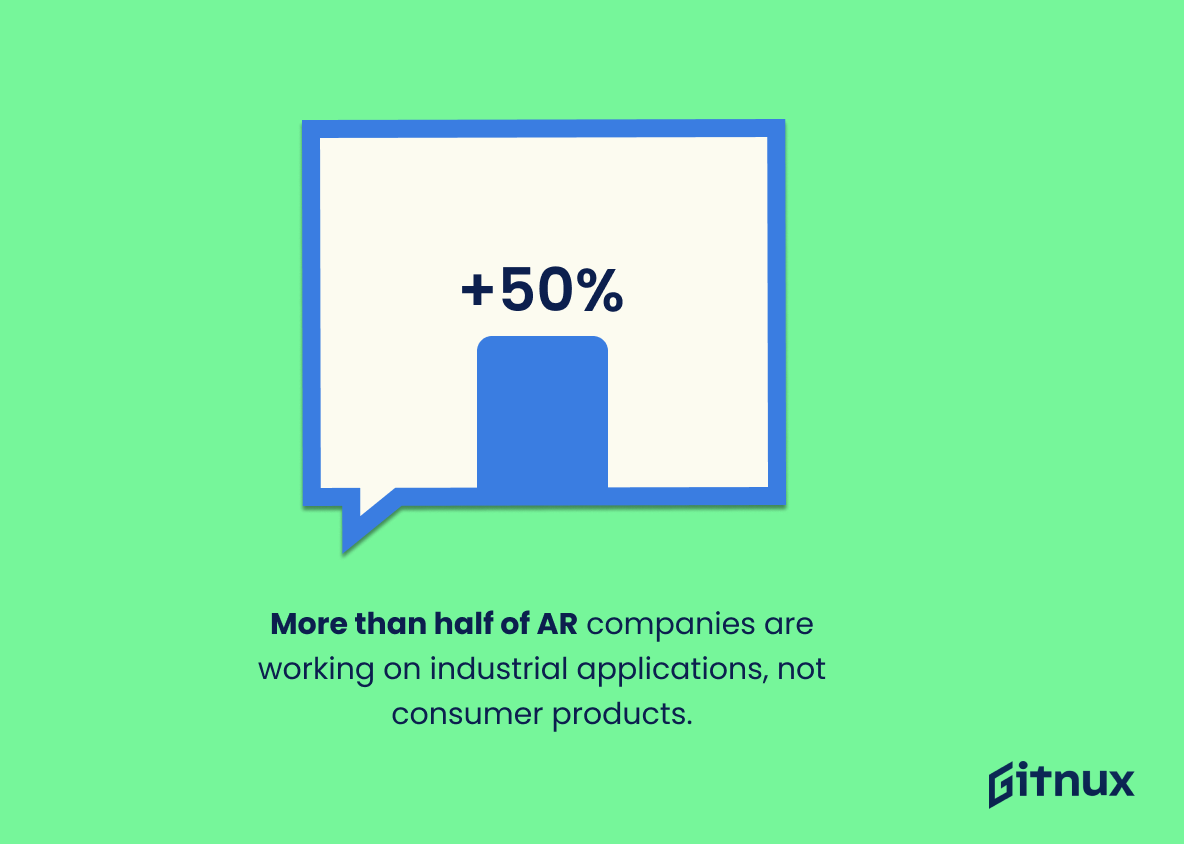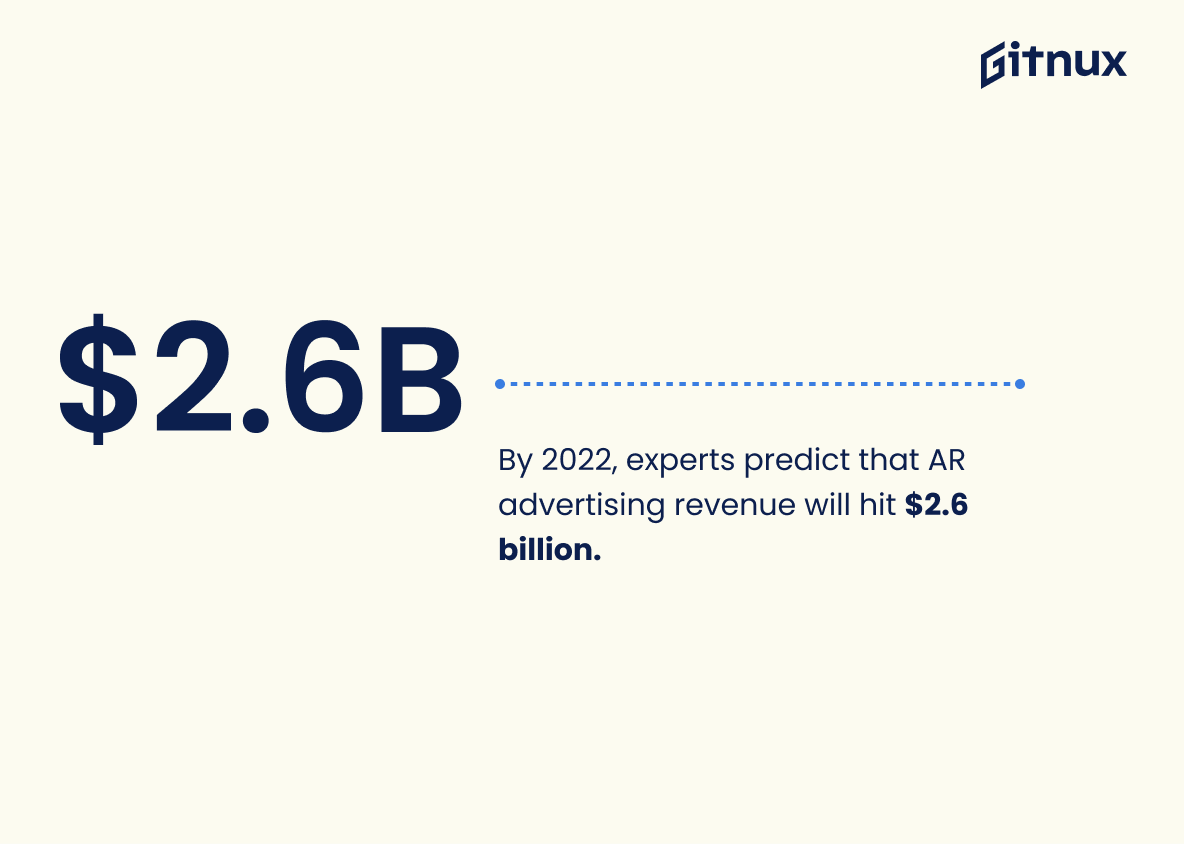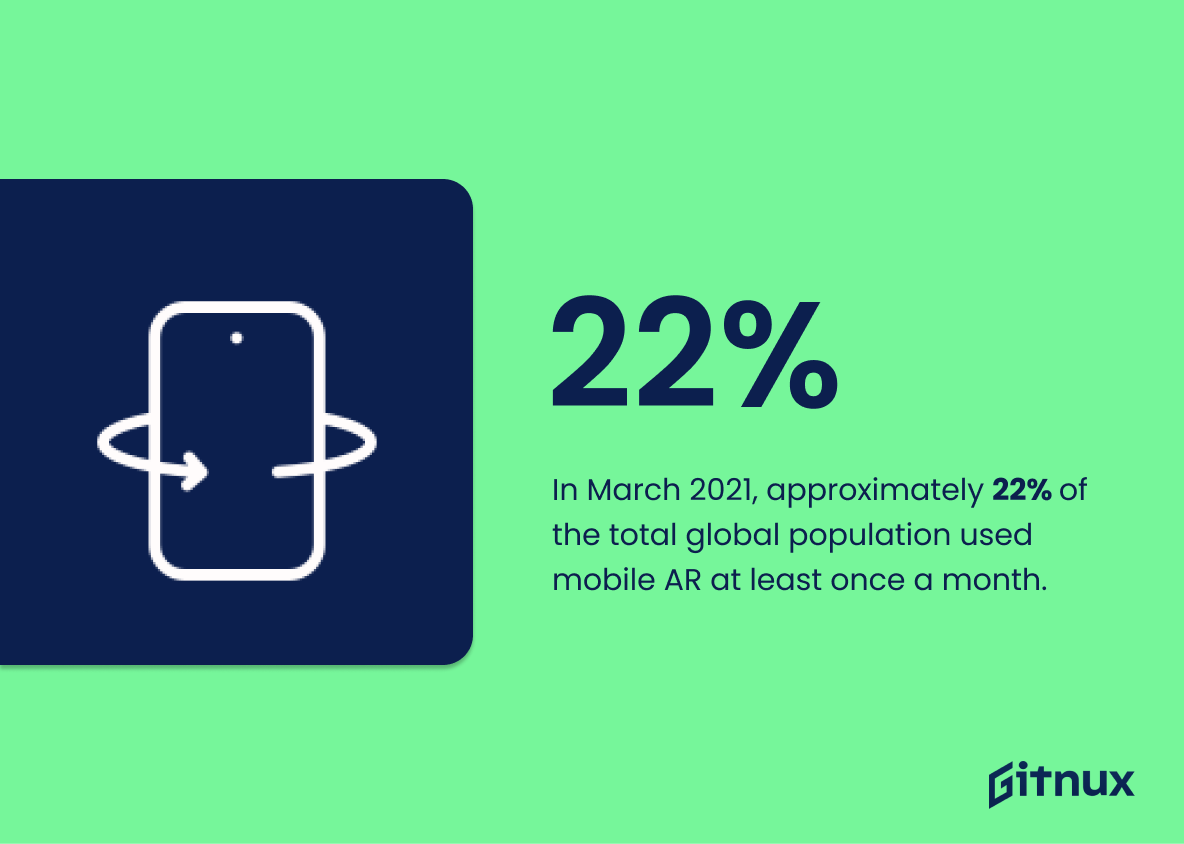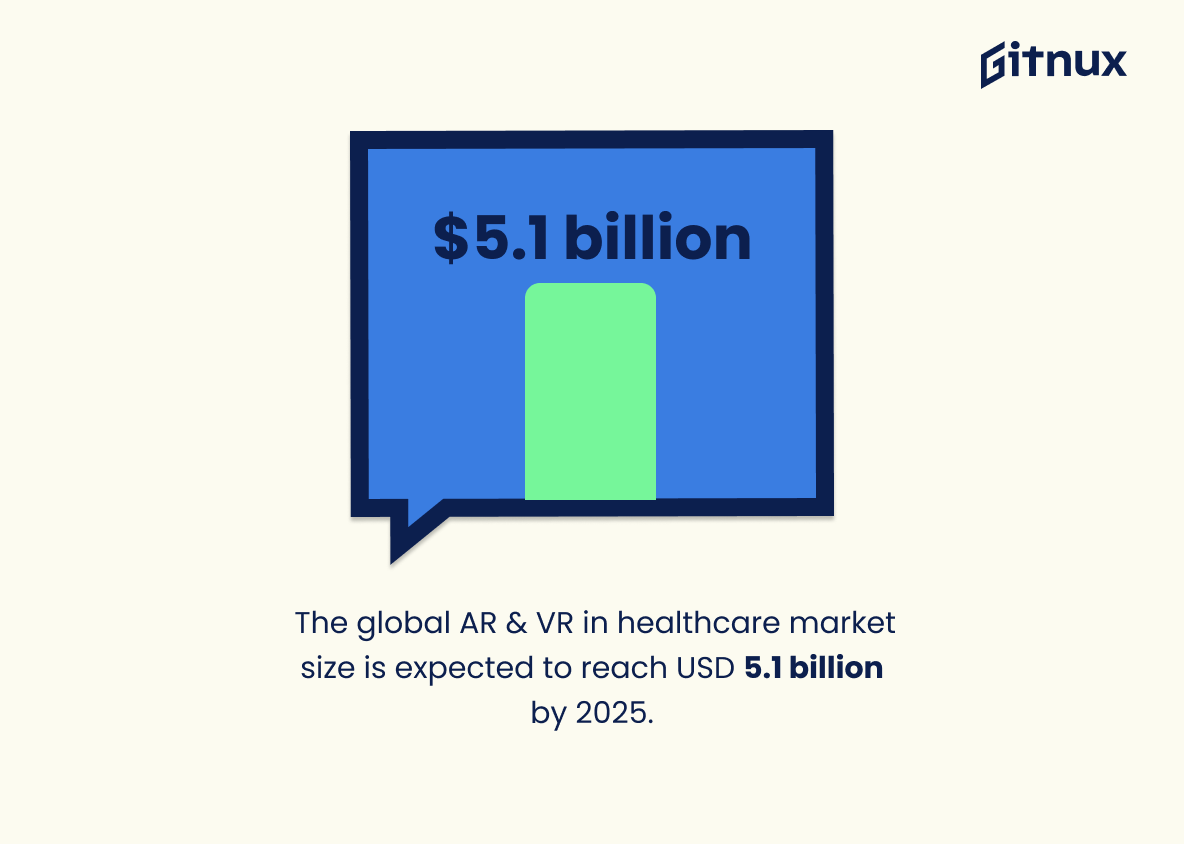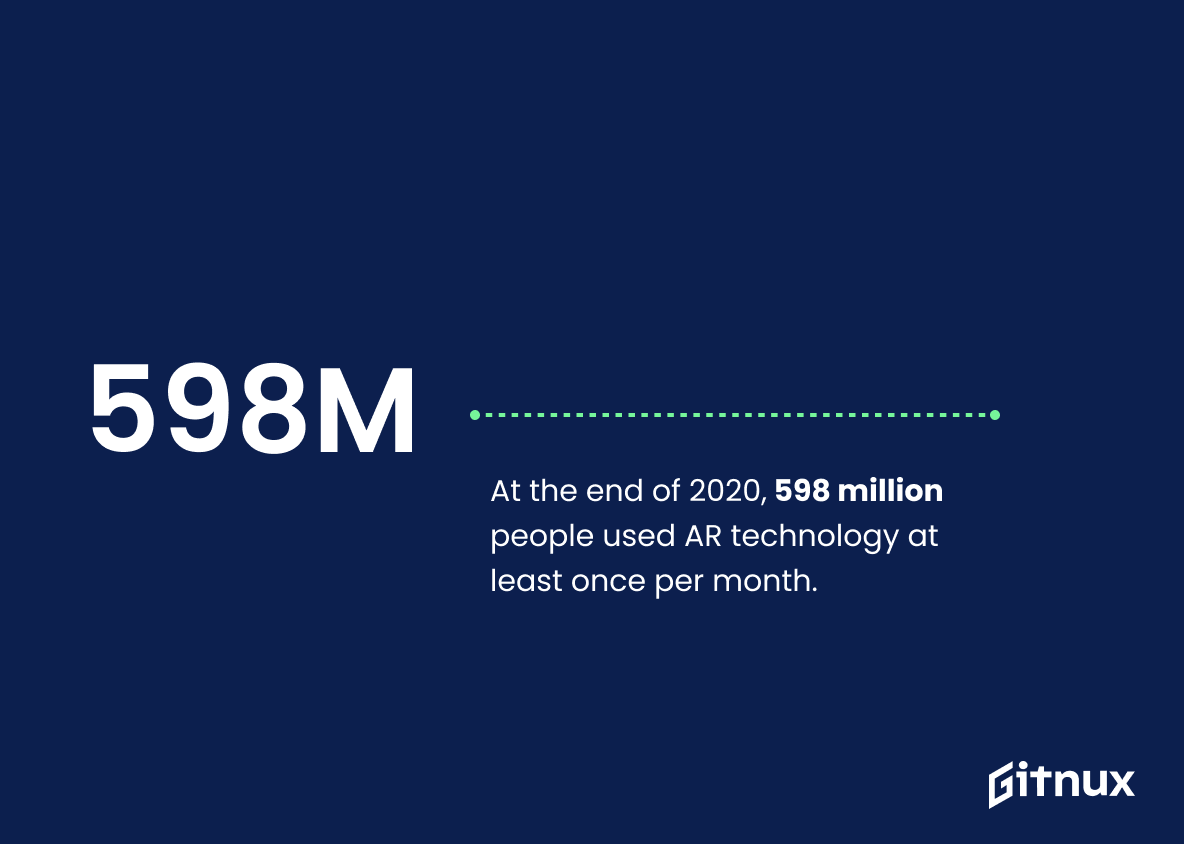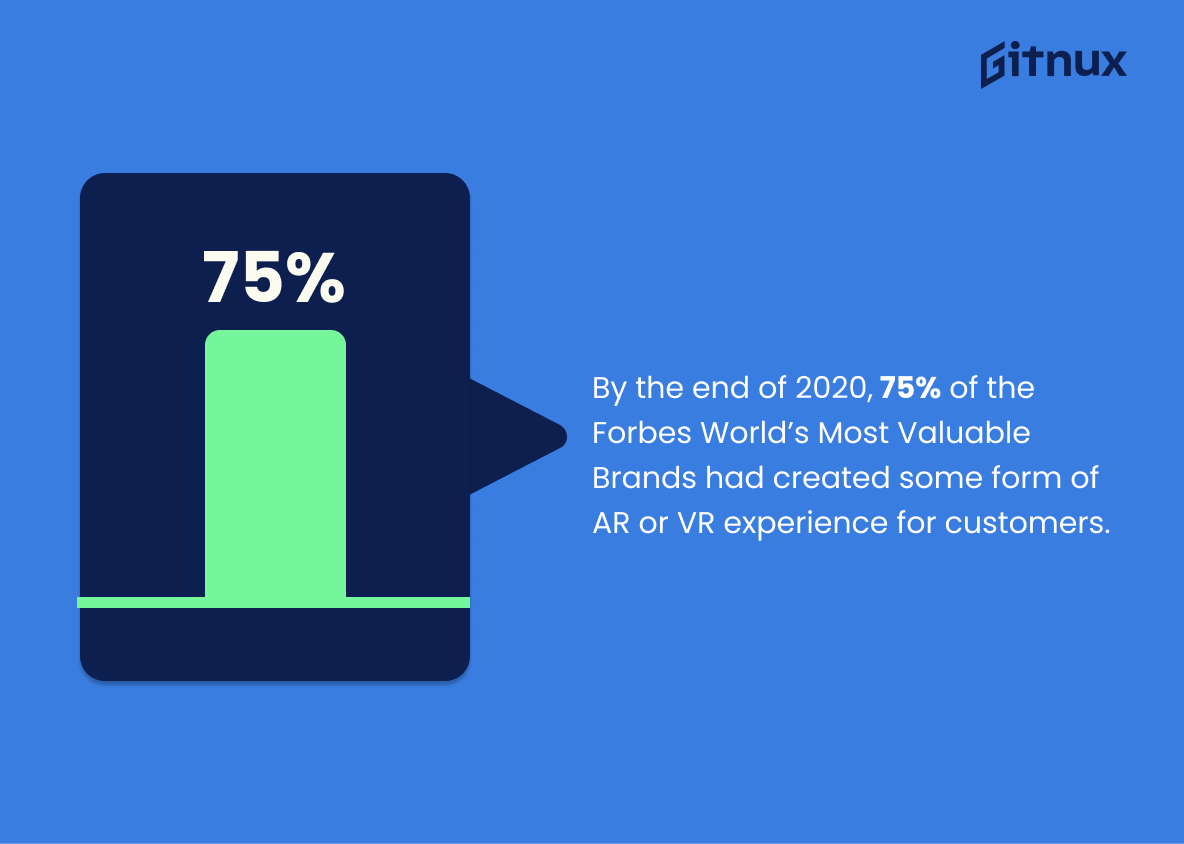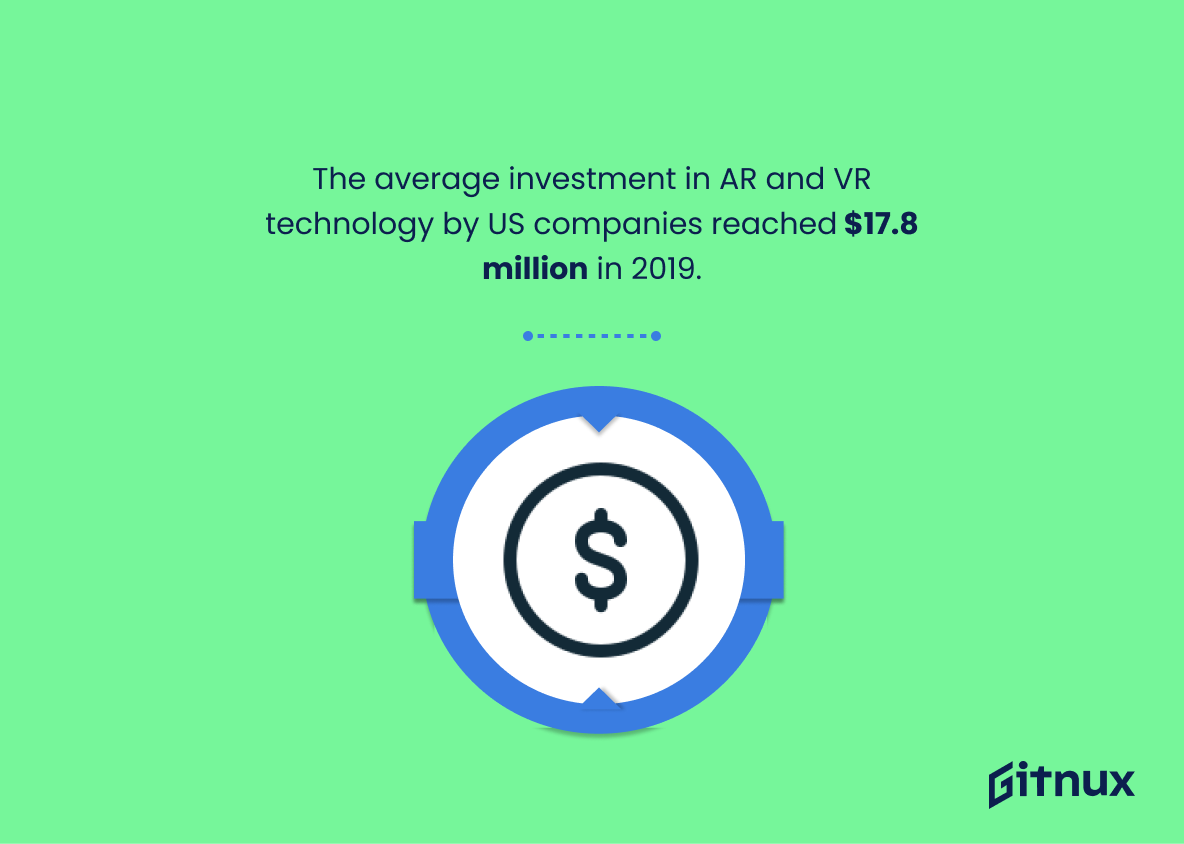Step into the transformative world of Augmented Reality through our comprehensive deep dive into AR industry statistics. In an era where technology manifests the unimaginable into tangible experiences, AR stands at the forefront, sparking curiosity and breakthroughs alike. In this insightful blog post, we unravel the defining trends, growth figures, and future predictions governing the dynamic AR sector. Whether you’re a tech enthusiast, a budding entrepreneur, or a seasoned business leader, understanding these statistics is pivotal to navigating and conquering the burgeoning landscape of Augmented Reality. Embark on this exciting journey with us, as we explore the figures behind the fiction.
The Latest Ar Industry Statistics Unveiled
The global augmented reality market size was valued at USD 17.67 billion in 2020.
Diving into the world of Augmented Reality (AR), you’ll surely be awestruck by the unimaginable strides this industry has made. Picture this, the AR market, a once nascent player, had a commanding value of a staggering USD 17.67 billion in 2020 alone. This highlights the sheer volume and potential this industry houses. It’s not financial magic but a testament to how drastically AR has captured the interest of worldwide consumers and businesses. Factoring in such a robust valuation provides us with a panoramic ‘money lens’ to view the scale at which AR is revolutionizing our world – specifically, in areas like gaming, education, healthcare and so much more. So, strap in as we take a deep dive into a deceptively immersive realm where reality is just but the beginning.
The AR market is expected to reach $198 billion in 2025.
Within the labyrinth of the AR industry, the forecasted growth to $198 billion in 2025 serves as a beacon of opportunity. It illustrates a potential goldmine that ventures, businessmen, and enthusiasts can look forward to, illuminating the magnitude of potential within this technology domain. This figure effectively underscores the tremendous upward trajectory of AR, shaping a profound interpretation of its revenue generating potential, market penetration, and global impact. It becomes an invaluable tool to strategically gauge the immersive potential of this groundbreaking technology. Thus, in the context of a blog post about AR Industry Statistics, it can be a compelling starting point for discussions about market trends, investment opportunities, commercial applications, and the overall rapid advancement predicted for this field.
As of 2021, AR/VR spending in the education sector is forecast to reach $12.6 billion.
Forecasting an impressive expenditure of $12.6 billion in the education sector signifies thriving prospects for the AR/VR industry in 2021. This statistic acts like a lit torch, illuminating the path leading to opportunities in this dynamic sector. In the sprawling landscape of AR industry statistics, this showcases not only the growth in demand for these immersive technologies, but also underlines the increasing recognition of AR/VR as essential tools in educational environments. Thus, it paints a compelling picture of the far-reaching potential and escalating market value of AR/VR technologies.
The AR and VR market in the United States is projected to be worth $35.5 billion by 2025.
Unveiling the vast potential of the AR and VR industry, the projection that the sector could hit the dazzling height of $35.5 billion by 2025 in the United States amplifies its incredible growth trajectory. This prediction, like a North Star, underscores the enormity of opportunities awaiting technology investors, entrepreneurs, and innovators. Amidst the current wave of technological advancement, this statistic is a vivid testimony of the AR and VR industry’s unparalleled momentum, setting the stage for significant revolution in various sectors ranging from gaming to healthcare. In essence, this figure paints the portrait of an industry at the cusp of a grand metamorphosis, making it a crucial stat in any discourse about the future of AR and VR.
Worldwide shipments of AR glasses are forecast to reach 1.2 million units by 2022.
Examining the future landscape of the AR industry, the projection of the worldwide shipment of AR glasses reaching 1.2 million units by 2022 subtly underlines the booming potential of this industry. This figure elucidates the rising consumer appetite for AR technology and prognosticates the trend of future investment flow. Drawing parallels to this testament, players in AR industry could strategize their market approach, while potential investors could decipher valuable insights. Additionally, the burgeoning commercial opportunity signified here could act as a catalyst for new players eyeing entry into the AR market.
In 2020, 32% of companies across various industries used AR and VR for employee training.
The rapidly evolving tech landscape manifests itself in the data point that demonstrates an impressive 32% of businesses, spanning a multitude of industries, have integrated AR and VR into their employee training protocols in the year 2020. This compelling figure, testifying to a significant shift in corporate training methodology, suggests the palpable impact Virtual Reality (VR) and Augmented Reality (AR) are having on enhancing employee skills and productivity. Embedded in this trend is a signal about the future: the growing prominence of immersive technology experiences in everyday business operations. Navigating through this data is akin to peering through a statistical window into the future of the digitalized corporate world, positioning AR and VR as the go-to tools for work-skills advancement.
More than half of AR companies are working on industrial applications, not consumer products.
Exploring this statistic acknowledges a surprising dominance within the Augmented Reality (AR) industry. Typically, one might expect a strong focus on consumer products due to their visibility and direct impact on daily life. However, the majority of AR companies directing their efforts towards industrial applications paints a different picture. This suggests that the industry sees substantial growth and demand in areas like manufacturing, logistics, healthcare, and others. This intriguing pivot punctuates the notion that AR isn’t limited to simply enhancing gaming or social media experiences but is making vast strides in enhancing and revolutionizing industrial processes. Feel the gravity of this statistic, it’s guiding the needle of innovation firmly towards industry-specific AR solutions, reshaping expectations and projections for the future of the AR sector.
By 2022, experts predict that AR advertising revenue will hit $2.6 billion.
With the crystal ball of data and analysis in our hands, we can see how vividly the landscape of AR industry is due to shift dramatically by 2022. The monumental forecast of $2.6 billion revenue solely from AR advertising is not just an isolated number. Rather, it’s a guiding beacon, enlightening us about how strongly poised this technology is for an explosion in popularity and commercial success.
This revenue prediction shouts out the upcoming heavy influence of AR in the advertising industry. It underlines AR’s growing magnetism for businesses in search for innovative ways for brand building and customer engagement. This transformational surge in AR advertising revenue signals the power AR holds to revolutionize the way businesses interact with their consumers. Putting it in perspective, this statistic sentences us to a thrilling journey leading to a future where AR will not just be a sporadic presence, but a ubiquitous essence of our everyday lives and economy.
47% of early adopters of sciences are in AR & VR industries.
Peeling back the layers of this intriguing statistic reveals a vibrant indication of the pulsating heart of the AR & VR industries. A substantial 47% of early adopters breaking ground in sciences are drawn to this immersive and burgeoning field. Their choice to navigate towards AR & VR paints a vivid picture of these industries as the new frontier of innovation. In the mosaic of the AR industry statistics, each individual choice to venture into AR & VR adds a dot of color, culminating to this imposing 47%. This magnetism towards AR & VR in sciences not only corroborates their revolutionary potential, but also signals their role as catalysts for the advancement of sciences. In essence, this statistic stands as a testament to the AR & VR industries’ thriving promise and their irresistible allure to those at the vanguard of scientific exploration.
By 2020, 100 million consumers shopped in AR online and in-store.
Highlighting the compelling statistic of 100 million consumers adopting AR for online and in-store shopping by 2020 underscores the powerful narrative of AR’s transformative impact on the retail industry. It speaks volumes about consumers’ evolving shopping habits, their welcoming approach towards cutting-edge technology, and the sheer influence this technology has in shaping our digital future. This quantum leap in AR use not only marks a dramatic shift in consumer behavior but also paves the way for innovative opportunities and challenges, making it a key part of the conversation in any discourse about AR industry statistics.
In March 2021, approximately 22% of the total global population used mobile Augmented Reality (AR) at least once a month.
Delving into the labyrinth of AR industry data, the sparkling gem that immediately catches our attention is the curious revelation from March 2021: Nearly a quarter of the global populace engaged with mobile Augmented Reality (AR) at a minimum monthly frequency.
Why does this gem gleam so brightly, lighting up the AR terrain?
Firstly, it signifies the dramatic shift from AR being an esoteric technology reserved for specific sectors, to becoming very much a part of consumer’s daily life. This penetration in everyday routines indicates not just widespread acceptance and adaptation, but, importantly, also familiarity and comfort with AR technology.
Secondly, the huge number of mobile AR users introduces a potential customer base that businesses exploiting AR technology can tap into. They can use it to enrich customer experience, boost engagement levels, increase brand awareness, or even leverage as a novel sales platform. Thus, it gives a strong pointer to businesses where they might want to consider steering their ventures.
Lastly, this statistic throws light on the role of smartphones as a driving force behind the AR revolution. It hints at the trend that future development in AR is likely to be heavily tied to mobile technology. In essence, this statistic serves as a lighthouse, guiding the way into the future of AR.
The global AR & VR in healthcare market size is expected to reach USD 5.1 billion by 2025.
Delving into the projected fortune of the global AR & VR in healthcare market lays the groundwork for an enriched comprehension of this expansive field. The prediction of its growth to an impressive USD 5.1 billion by 2025 allows a glimpse into the sheer magnitude and significance of this sector. It paints a grand portrait of the strides AR & VR technology is making, demonstrating its immense potential in the healthcare realm. In the context of a blog post about AR Industry statistics, this piece of data forms a compelling cornerstone, empowering readers with an eye-opening perspective of the industry’s future financial trajectory. It is not just a promising statistic, but a voice echoing the ever-growing importance and indispensability of AR & VR technologies in today’s healthcare scenario.
At the end of 2020, 598 million people used AR technology at least once per month.
Undeniably, the figure illustrating that 598 million individuals engaged with AR technology on a monthly basis as we waved goodbye to 2020, sheds light on a pivotal narrative unfolding within the realm of AR Industry Statistics. Notably, this significant figure of user engagement underlines the accelerated adoption and acceptance of AR technology across the globe. It serves as a testament to the rapidly expanding user base and brings to attention the colossal potential that lies in this immersive technology. As we dissect the contours of this blooming industry, this statistic builds a robust bridge connecting users desire to tap into more advanced tech-based experiences and businesses striving to leverage innovative solutions. It essentially heralds AR technology’s transition from a nascent curiosity to an integral part of people’s daily lives, thereby signifying major opportunities and rapid growth within the AR industry.
By the end of 2020, 75% of the Forbes World’s Most Valuable Brands had created some form of AR or VR experience for customers or employees.
Digging into the futuristic landscape of the AR industry, the revelation that 75% of the Forbes World’s Most Valuable Brands had developed some form of AR or VR experience by the end of 2020 uncovers a narrative of immense interest. Through this data point, we unveil a trend of top-tier brands leaning into the complex yet dynamic sphere of AR or VR to connect with customers and employees in novel ways. This not only underscores the growing significance of these technologies but also indicates their inherent potential to shape future branding and customer engagement strategies. Utilizing this intel, businesses and entrepreneurs can glean an understanding of where the innovation wind is blowing and may find themselves inspired to pilot their own AR and VR explorations.
The average investment in AR and VR technology by US companies reached $17.8 million in 2019.
Digging into the heart of AR industry statistics, the impressive fact that in 2019, US companies propelled their investment in AR and VR technologies to an average of $17.8 million cannot be overlooked. This striking figure isn’t just a number. It’s a clear testament to the growing fascination and reliance on AR and VR technologies within the corporate industry. This considerable surge in investment underscores both the existing viability of these technologies and their projective growth in reshaping the future of various sectors. It exhibits the business world’s accelerating acceptance and trust in the potential AR and VR hold to enhance operational efficiency, customer service, and overall experience. Ultimately, this statistic serves as a compelling marker of the mounting significance and inescapable impact of AR and VR technologies in today’s evolving business landscape.
Conclusion
In summary, AR industry statistics undoubtedly point us towards a future increasingly streamlined by augmented reality. The meteoric growth in investments, usage and technological advancements consistently tell us that AR is not only here to stay but is poised to revolutionally redefine our digital narrative. For businesses, the earliest adopters of AR may bask in the long-term benefits of this revolutionary technology. Keep an eye on these statistics as they evolve, making data-driven decisions could be the key to staying ahead in this rapidly evolving landscape. For those willing to embrace innovation, the augmented reality market promises unprecedented opportunities and immense potential for growth and development.
References
0. – https://www.www.grandviewresearch.com
1. – https://www.www.gartner.com
2. – https://www.arpost.co
3. – https://www.artillry.co
4. – https://www.www.pwc.co.uk
5. – https://www.www.forbes.com
6. – https://www.www.tdgresearch.com
7. – https://www.www.capgemini.com
8. – https://www.www.statista.com
9. – https://www.www.cmswire.com
10. – https://www.www.emarketer.com
